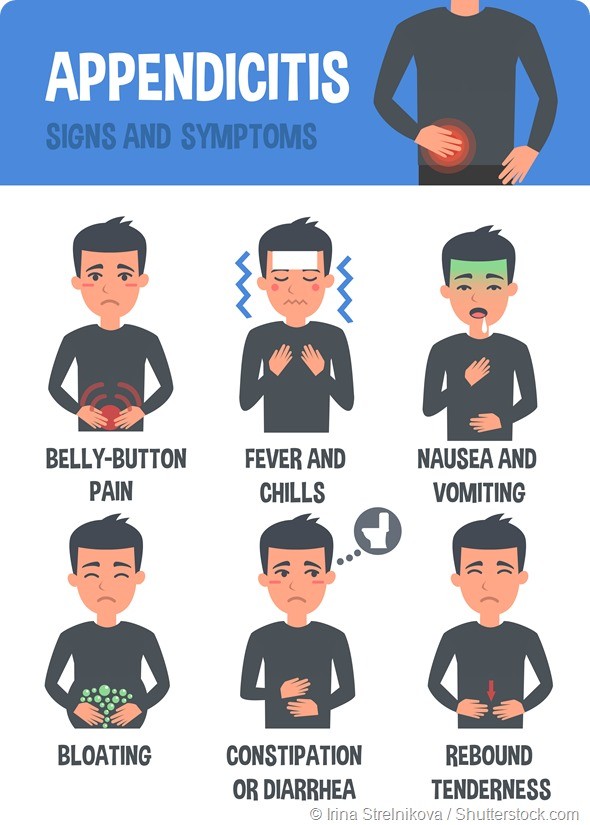Why Did We Have An Appendix? Explore the evolutionary roots, immune functions, and digestive roles of this intriguing organ. Discover expert insights and reliable answers at WHY.EDU.VN regarding the significance of the vermiform appendix, appendicitis, and its impact on human health and find out more about how it impacts our overall well-being and gastrointestinal health.
1. The Enigmatic Appendix: Unveiling Its Purpose
The human appendix, a small, worm-shaped pouch extending from the large intestine, has long been a subject of scientific curiosity. For years, it was considered a vestigial organ, a remnant of our evolutionary past with no real function in modern humans. However, recent research has challenged this view, revealing potential roles for the appendix in immunity and gut health. This article delves into the complex history and current understanding of the appendix, exploring why we might have it and what it does for us.
1.1. What is the Appendix and Where Is It Located?
The appendix, also known as the vermiform appendix, is a tube-shaped sac attached to the cecum, the beginning of the large intestine. It’s typically 5 to 10 centimeters (2 to 4 inches) long and about 6 millimeters (0.24 inches) in diameter. The appendix is located in the lower right abdomen, at the junction of the small and large intestines.
1.2. Is the Appendix a Vestigial Organ? Debunking the Myth
For a long time, the appendix was considered a vestigial organ, a leftover from our evolutionary ancestors that no longer serves a purpose. This idea was popularized by Charles Darwin, who suggested that vestigial organs were once useful but became redundant as species evolved. While the appendix may have been more important to our ancestors, modern research suggests it still plays a role in our bodies. The function of the human appendix is still a subject of debate among scientists.
1.3. What Are the Key Functions of the Human Appendix?
Emerging research suggests the appendix may play a role in immunity and gut health, acting as a safe house for beneficial bacteria and supporting immune responses.
Table: Potential Functions of the Appendix
| Function | Description |
|---|---|
| Gut Microbiota Reservoir | Stores beneficial gut bacteria that can repopulate the gut after illness. |
| Immune System Support | Contains lymphoid tissue that may help in the maturation of B-lymphocytes, which produce antibodies. |
| Early Immune Defenses | May produce early defenses that help prevent serious infections in humans. |
| Waste Movement | Helps in the movement and removal of waste in our digestive system. |


2. The Appendix and Evolution: A Look Back in Time
The appendix’s role in evolution is still debated, but many scientists believe it was once more important for digesting plant matter. As human diets changed, the appendix may have become less important, but that doesn’t mean it’s useless.
2.1. Darwin’s Theory on Vestigial Organs and the Appendix
Charles Darwin proposed that vestigial organs are remnants of evolutionary history, structures that were once useful to our ancestors but have lost their function over time. He cited the appendix as a possible example of a vestigial organ in humans.
2.2. The Appendix in Herbivorous Vertebrates
In herbivorous vertebrates, the appendix, or a similar structure called the cecum, is typically larger and more developed than in humans. This is because it plays a crucial role in digesting plant matter, which is more difficult to break down than meat.
2.3. How Did the Human Diet Affect the Appendix Over Time?
As humans evolved and began to consume more meat and easily digestible foods, the appendix may have become less important for digestion. This could explain why it is smaller and less functional in humans compared to herbivorous animals.
3. The Appendix and the Immune System: A Surprising Connection
One of the most interesting discoveries about the appendix is its connection to the immune system. The appendix contains lymphoid tissue, which plays a role in immune function.
3.1. The Appendix’s Role in Mammalian Mucosal Immune Function
The appendix is believed to be involved in mammalian mucosal immune function. The appendix is a component of mucosa-associated lymphoid tissue (MALT) and may be involved in immune responses.
3.2. Extrathymically Derived T-Lymphocytes and B-Lymphocyte-Mediated Immune Responses
The appendix may be involved in extrathymically derived T-lymphocytes and B-lymphocyte-mediated immune responses. It is also said to produce early defenses that help prevent serious infections in humans.
3.3. The Appendix as a Safe House for Beneficial Bacteria
Some researchers believe that the appendix acts as a “safe house” for beneficial gut bacteria. This reservoir of good bacteria can be used to repopulate the gut after an illness or course of antibiotics that wipes out the existing gut flora.
4. The Appendix and the Digestive System: More Than Just Waste
While it was once thought to be useless for digestion, research suggests the appendix may play a role in maintaining a healthy gut microbiome.
4.1. The Appendix as a Reservoir for Good Microbes
The appendix may serve as a reservoir for good microbes, which are essential for maintaining a healthy digestive system. These microbes help us digest food, produce vitamins, and protect us from harmful bacteria.
4.2. How the Appendix Helps “Reboot” the Digestive System
When the digestive system is disrupted by illness or antibiotics, the appendix can release its stored microbes to help “reboot” the gut and restore a healthy balance of bacteria.
4.3. The Location of the Appendix and Its Relation to the Microbial Flora
The location of the appendix, at the junction of the small and large intestines, makes it ideally suited to interact with the microbial flora of the digestive system. This location allows the appendix to both store and release bacteria as needed.
5. Appendicitis: When the Appendix Becomes a Problem
Despite its potential benefits, the appendix can also cause problems. Appendicitis, an inflammation of the appendix, is a common and potentially serious condition.
5.1. What is Appendicitis and What Causes It?
Appendicitis is an inflammation of the appendix, typically caused by a blockage. This blockage can be due to a variety of factors, including fecal matter, foreign objects, or tumors.
5.2. Symptoms of Appendicitis: Recognizing the Warning Signs
The symptoms of appendicitis can vary, but common symptoms include pain in the lower right abdomen, nausea, vomiting, fever, and loss of appetite. It is crucial to seek medical attention immediately if you suspect you have appendicitis.
5.3. Diagnosis and Treatment of Appendicitis
Appendicitis is typically diagnosed through a physical exam, blood tests, and imaging tests such as a CT scan or ultrasound. The standard treatment for appendicitis is surgical removal of the appendix, called an appendectomy.
6. Living Without an Appendix: What to Expect After an Appendectomy
While the appendix may have some benefits, living without it is generally not a problem. Most people who have had an appendectomy experience no long-term health issues.
6.1. The Impact of Appendectomy on the Immune System
Some studies have suggested that having an appendectomy may slightly increase the risk of certain infections, but the overall impact on the immune system is generally considered to be minimal.
6.2. Changes in Gut Microbiome After Appendix Removal
There may be some changes in the gut microbiome after appendix removal, but these changes are usually not significant. The gut microbiome is a complex and resilient ecosystem, and it can typically adapt to the absence of the appendix.
6.3. Long-Term Health Effects of Appendectomy
Most people who have had an appendectomy experience no long-term health effects. However, some studies have suggested a possible link between appendectomy and an increased risk of certain cancers, but more research is needed to confirm this association.
7. Alternatives to Appendectomy: Exploring Non-Surgical Options
In some cases, non-surgical treatments may be considered for appendicitis, particularly in uncomplicated cases.
7.1. Antibiotic Treatment for Uncomplicated Appendicitis
Antibiotics may be used to treat uncomplicated appendicitis, where there is no evidence of perforation or abscess formation. This approach involves a course of antibiotics to resolve the infection.
7.2. Monitoring and Observation as a Management Strategy
In certain situations, monitoring and observation may be recommended, especially if the symptoms are mild or improving. This involves close follow-up with a healthcare provider to ensure the condition does not worsen.
7.3. When is Surgery Still Necessary?
Surgery is still necessary if there is evidence of perforation, abscess, or if the patient does not respond to antibiotic treatment. In these cases, prompt surgical intervention is crucial to prevent serious complications.
8. The Appendix and Cancer: Understanding the Risks
While rare, the appendix can be affected by cancer. Understanding the risks and symptoms is essential for early detection and treatment.
8.1. Types of Appendix Cancer: Carcinoid Tumors and More
The most common type of appendix cancer is carcinoid tumors, which are slow-growing tumors that arise from neuroendocrine cells. Other types of appendix cancer include adenocarcinoma, mucinous adenocarcinoma, and signet ring cell carcinoma.
8.2. Symptoms and Diagnosis of Appendix Cancer
The symptoms of appendix cancer can be vague and often mimic other conditions, such as appendicitis. Symptoms may include abdominal pain, changes in bowel habits, bloating, and weight loss. Diagnosis typically involves imaging tests, such as a CT scan or MRI, and a biopsy of the tumor.
8.3. Treatment Options for Appendix Cancer
The treatment for appendix cancer depends on the type and stage of the cancer. Treatment options may include surgery, chemotherapy, and radiation therapy.
9. Current Research on the Appendix: What Are Scientists Still Discovering?
Scientists are continuing to research the appendix to better understand its functions and its role in health and disease.
9.1. New Insights into the Appendix’s Immune Functions
Ongoing research is exploring the specific immune functions of the appendix and how it contributes to overall immune health. This research may lead to new strategies for preventing and treating immune-related diseases.
9.2. The Appendix and the Gut Microbiome: A Deeper Dive
Scientists are also investigating the relationship between the appendix and the gut microbiome in more detail. This research may reveal new ways to manipulate the gut microbiome to improve health and prevent disease.
9.3. Future Directions in Appendix Research
Future research on the appendix will likely focus on further elucidating its immune functions, its role in the gut microbiome, and its potential as a target for new therapies.
10. Debunking Common Myths About the Appendix
There are many common myths and misconceptions about the appendix. Here are a few of the most common ones, debunked:
10.1. Myth: The Appendix Serves No Purpose
Fact: While it was once thought to be useless, research suggests the appendix may play a role in immunity and gut health.
10.2. Myth: Everyone Needs Their Appendix Removed
Fact: Only people with appendicitis or other appendix-related conditions need to have their appendix removed.
10.3. Myth: You Can’t Live a Normal Life Without an Appendix
Fact: Most people who have had an appendectomy experience no long-term health issues and can live a perfectly normal life.
11. The Appendix in Different Species: A Comparative Look
The appendix is not unique to humans. Many other species also have an appendix or a similar structure called the cecum.
11.1. The Appendix in Primates and Other Mammals
The appendix is found in many primates and other mammals, although its size and function can vary. In some species, the appendix is much larger and more important for digestion than in humans.
11.2. Evolutionary Differences in the Appendix Across Species
The evolutionary differences in the appendix across species reflect the different diets and lifestyles of these animals. For example, herbivores tend to have larger and more complex appendixes than carnivores.
11.3. What Can We Learn from Studying the Appendix in Other Animals?
Studying the appendix in other animals can help us better understand its evolution, its functions, and its potential as a target for new therapies.
12. Maintaining a Healthy Gut: Tips for a Happy Appendix
While there’s no guarantee you can prevent appendicitis, maintaining a healthy gut can support overall health and potentially benefit your appendix.
12.1. The Importance of a Balanced Diet for Gut Health
A balanced diet rich in fruits, vegetables, and whole grains is essential for maintaining a healthy gut. These foods provide fiber, which helps to promote regular bowel movements and prevent constipation.
12.2. Probiotics and Prebiotics: Supporting Your Gut Microbiome
Probiotics and prebiotics can help to support a healthy gut microbiome. Probiotics are live bacteria that can help to replenish the good bacteria in your gut, while prebiotics are non-digestible fibers that feed the good bacteria in your gut.
12.3. Lifestyle Factors That Impact Gut Health
Lifestyle factors such as stress, sleep, and exercise can also impact gut health. Managing stress, getting enough sleep, and exercising regularly can all help to promote a healthy gut microbiome.
13. The Appendix and the Future of Medicine: Potential Therapeutic Uses
The appendix may have potential therapeutic uses in the future of medicine, particularly in the areas of regenerative medicine and immune therapy.
13.1. Using Appendix Tissue for Regenerative Medicine
Appendix tissue contains stem cells that could potentially be used for regenerative medicine. These stem cells could be used to repair damaged tissues or organs.
13.2. Harnessing the Appendix’s Immune Cells for Therapy
The immune cells in the appendix could potentially be harnessed for immune therapy. These cells could be used to fight cancer or other diseases.
13.3. The Appendix as a Model for Studying Gut Immunity
The appendix could be used as a model for studying gut immunity. This could lead to new insights into the causes and treatment of immune-related diseases.
14. Seeking Expert Advice: When to Consult a Doctor About Appendix Concerns
It’s important to consult a doctor if you have any concerns about your appendix, especially if you experience symptoms of appendicitis.
14.1. Recognizing Symptoms That Warrant Medical Attention
Symptoms that warrant medical attention include pain in the lower right abdomen, nausea, vomiting, fever, and loss of appetite.
14.2. Questions to Ask Your Doctor About Appendix Health
Questions to ask your doctor about appendix health include: What are the risk factors for appendicitis? What are the symptoms of appendicitis? How is appendicitis diagnosed and treated? What are the long-term health effects of appendectomy?
14.3. Finding Reliable Information and Support
Finding reliable information and support is essential for managing appendix-related concerns. Talk to your doctor, consult reputable medical websites, and connect with support groups for people with appendix-related conditions.
15. Conclusion: The Appendix – A Small Organ with a Big Story
The appendix, once considered a useless vestige of evolution, is now recognized as a potentially important player in immunity and gut health. While appendicitis remains a concern, understanding the appendix’s functions can help us appreciate this small organ and its role in our overall well-being.
Curious to know more or have specific questions about your health? Visit WHY.EDU.VN, located at 101 Curiosity Lane, Answer Town, CA 90210, United States, or contact us via WhatsApp at +1 (213) 555-0101. Our team of experts is ready to provide you with the answers and insights you need!
Frequently Asked Questions (FAQ) About the Appendix
1. What is the appendix and where is it located?
The appendix is a small, worm-shaped pouch attached to the cecum, the beginning of the large intestine. It is located in the lower right abdomen.
2. What is the purpose of the appendix?
Emerging research suggests the appendix may play a role in immunity and gut health, acting as a safe house for beneficial bacteria and supporting immune responses.
3. What is appendicitis?
Appendicitis is an inflammation of the appendix, typically caused by a blockage.
4. What are the symptoms of appendicitis?
The symptoms of appendicitis can vary, but common symptoms include pain in the lower right abdomen, nausea, vomiting, fever, and loss of appetite.
5. How is appendicitis treated?
The standard treatment for appendicitis is surgical removal of the appendix, called an appendectomy.
6. Can you live a normal life without an appendix?
Yes, most people who have had an appendectomy experience no long-term health issues and can live a perfectly normal life.
7. Is the appendix a vestigial organ?
While the appendix may have been more important to our ancestors, modern research suggests it still plays a role in our bodies.
8. Can appendicitis be treated without surgery?
In some cases, uncomplicated appendicitis may be treated with antibiotics.
9. Is appendix cancer common?
Appendix cancer is rare, but it can occur.
10. How can I maintain a healthy gut?
You can maintain a healthy gut by eating a balanced diet, taking probiotics and prebiotics, and managing stress.
This article provides a comprehensive overview of the appendix, its functions, and related conditions. For more information and expert advice, visit WHY.EDU.VN.
Disclaimer: This article is for informational purposes only and does not constitute medical advice. Always consult with a qualified healthcare professional for any health concerns or before making any decisions related to your health or treatment.
Address: 101 Curiosity Lane, Answer Town, CA 90210, United States
Whatsapp: +1 (213) 555-0101
Trang web: why.edu.vn
